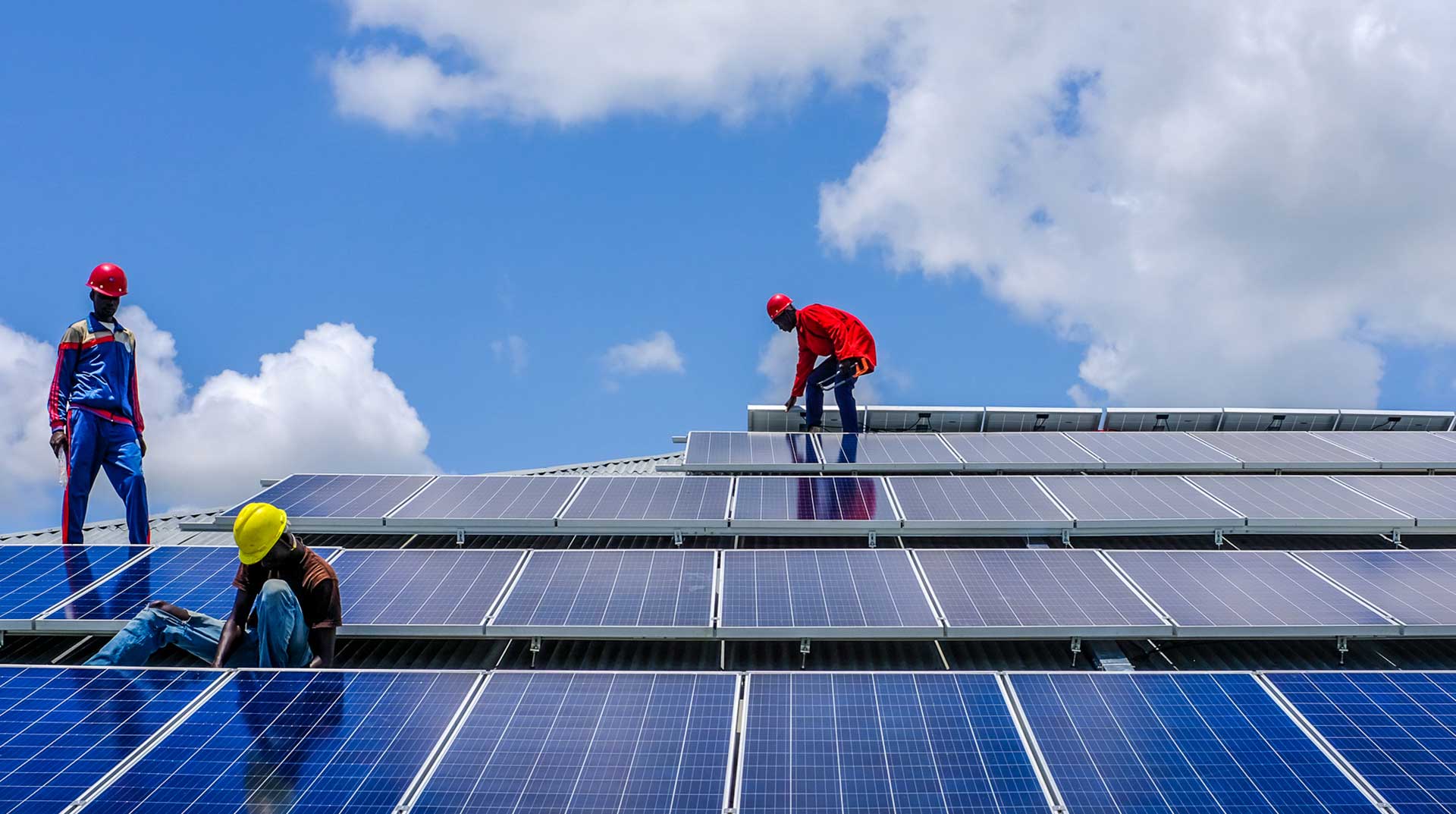Photo showing the UNDP Resident Representative (a.i), Rokya Ye Dieng (Left) handing over equipment to Gabriel Kpaka (Right), Director-General of the Sierra Leone Meteorological Agency during the handing over ceremony at UNDP Conference Room in Freetown. Photo Credit: @UNDP/Sulaiman Jalloh.
The United Nations Development Programme (UNDP) has recently supported the Environmental Protection Agency (EPA) and Sierra Leone Meteorological Agency (SLMET) with equipment worth thousands of United States Dollars for the establishment of a functional network of coastal climate and sea level rise monitoring systems to support innovative satellite transmissions and hydrodynamic modelling and forecasting facilities.
Borne out of GEF funded project entitled “Adapting to climate change induced coastal risks management in Sierra Leone,” UNDP’s support to the two Agencies is deliberate towards enhancing the availability of high-quality climatic data for critical decision-making and supporting the adaptation of coastal zones in Sierra Leone.
The equipment procured by UNDP include one (1) low cost amphibious drone base GIS technology (Sensefly eBee Plus), four (4) HP Elite Desktop + accessories, four (4) remote sensing image processing software packages and equipment to assist climate and oceanographic monitoring, one (1) Rolling Paper Trimmer and Paper cutter, two (2) Mirror Stereoscope-complete kit, two (2) Canon EOS Rebel Camara + accessories, one(1) AO Paper cutter, two(2) HP SD Pro Scanner, one (1) HP Printing Software, one hundred (100) Solar Powered AM/FM Weather Alert Radio sets, Flashlights and Cell Phone Chargers (Red), and fifteen (15) VHF Radios (Aqua Quake) VHF IC-M71 radios.
UNDP Resident Representative a.i, Rokya Ye Dieng said that the transferred equipment to EPA & SLMET worth over 360,000 United States Dollars which had been procured and will be positioned to expedite the readiness of a real-time climatic data to forge a pathway for critical decision-making and supporting the adaptation of coastal zones in Sierra Leone.
She further stated that the GIS system and drone procured were meant to support web-based services for mapping, managing, visualizing, analyzing, monitoring, evaluating and reporting, to provide timely information to help support the development of coastal policy, planning and management in the country considering the vitalness of mobile mapping processes as cost effective and reduces the risks and assures ease of repetition.
She also assured the EPA that the project team would liaise with the Agency to map out and measure progress on the status and survival rates of the mangrove areas that had been replanted by this project through the use of drone technology, and thus urged the EPA to get all the skills required for drone mapping to ensure the equipment’s procured were used for their intended purposes.
Photo showing cross section of EPA, SLMET and UNDP staff at the handing over ceremony at UNDP Conference Room in Freetown. Photo Credit: @UNDP/Sulaiman Jalloh.
The Deputy Director-General and Head of Operations at SLMET, Gabriel Kpaka, expressed gratitude for UNDP support and continuous efforts to improving the human and technical capacity of his Agency.
“Decades plus year ago, when I joined SLMET, we only had two weather stations and the services provided then were only limited to the aviation sector, but with laudable support from the UNDP through the early warning project and our partnership, the country now has several weather stations,” he said.
Mr. Kpaka informed that the support has placed Sierra Leone among other countries in West Africa to have marine weather stations which provide up-to-date marine data and weather information across the country. He ended by assuring UNDP that SLMET would use the equipment and all other supports to reach out to coastal communities in a bid to tackling the issues emanating from coastal zones.
The EPA Deputy Director, Natural Resources Management Department, Paul A. Lamin also extended his appreciation for the support from UNDP.
“I must confirm that there are huge gaps in ensuring service delivery at the EPA, but the equipment provided by the UNDP will mitigate such gaps and enhance service delivery in terms of capacity building. UNDP has not only provided material support to the EPA; it has also provided technical capacity in improving the work we do,” he said.
This support to the two Agencies is totaling the sum of $ 360,732 under project component to transfer technologies for climate and environmental monitoring infrastructure for climate resilient development and adaptation to climate change as part of a regional initiative that includes 11 countries in Africa.
Photo showing UNDP Resident Representative a.i -Rokya Ye-Dieng (Left) and the Deputy Director, Natural Resources Management Department of EPA Paul A. Lamin (Left)

 Locations
Locations


















